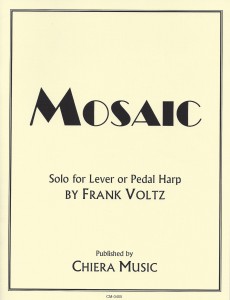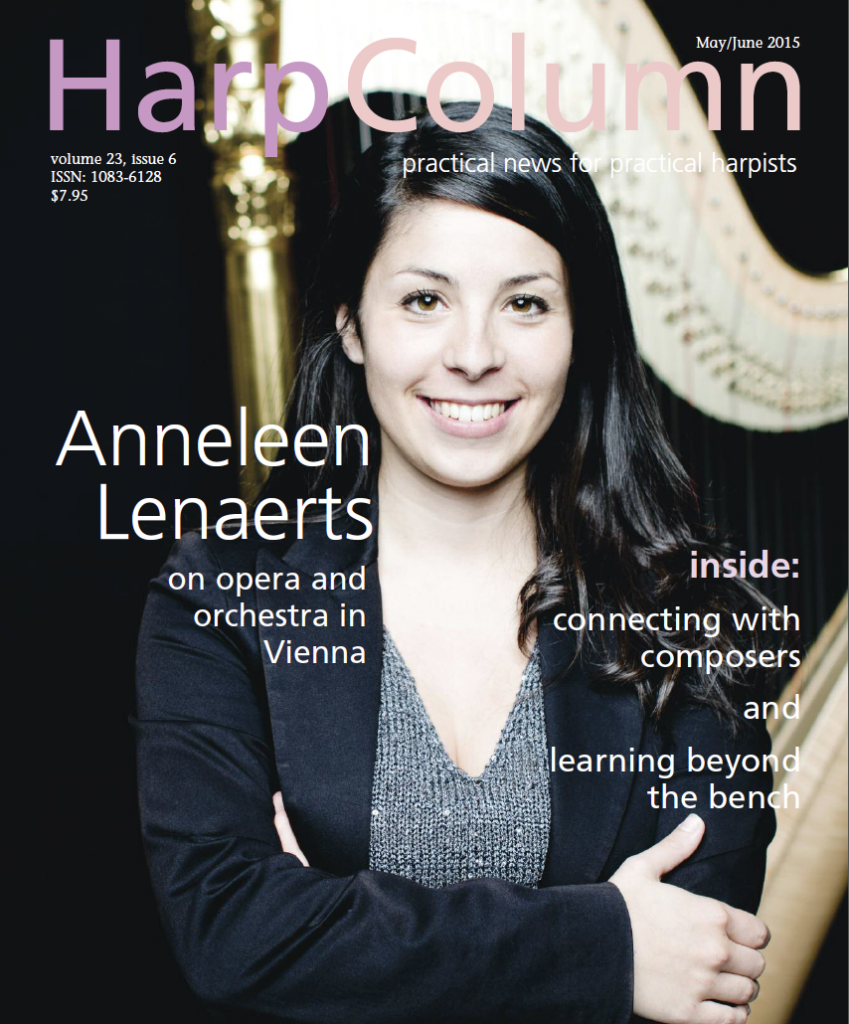Lest anyone believe that the lever harp is easier to play than the pedal harp or that the repertoire is less virtuosic, take a look at this new collection of music for Celtic harp by Michael O’Sullivan. Published by Fatrock Ink, O’Sullivan intends the six pieces in “Valentia Suite” to be a “loving and nostalgic tribute to the beautiful hidden gem Valentia Island, in County Kerry,” Ireland. The composer’s notes at the back of the book share a glimpse into the very personal perceptions that these pieces represent.
There is also a CD recording by harpist Haley Hewitt of Connecticut who premiered the suite at the 2013 Edinburgh International Harp Festival in Scotland. In addition to the printed book and CD, a downloadable print version is available, as well as an MP3.
To play all these arrangements, the lever harp must be tuned to E-flat and, of course, they can also be played on pedal harp. This music is for the advanced or upper intermediate player. Lever changes are indicated by an “x” notehead on the staff preceded by the accidental marking as well as an indication in the middle of the staff that ensures you don’t miss the notehead. Pedal changes are not included. There is no fingering provided and some of the fingerings are very complex and require an experienced player.
The first piece, “The Lightkeepers” has no lever changes, but both hands are quite busy on this moderately fast piece. The time signature alternates between 3/4 and 4/4 and there is one page turn.
“The Coombe Road/Session at Fintan’s” is the longest selection with several repeats. There are quite a few lever changes including a modulation from three flats to C Major. There are no markings for what levers to move first for the key change—there is simply the instruction to “set levers to C Major.” This occurs just after a page turn and the left hand has a note to play on the downbeat. That’s a lot of left hand action, in spite of the fermata in the preceding measure. (Practice, practice, practice—and good luck!) There are also several meter changes.
“Path to Glanleam” is a slow jig. It is a beautiful melody inspired by a tragic story. The lever changes only involve two notes and are quite manageable although the page turn is a little awkward.
“Captain John Fitzgerald” has more eighth notes than sixteenth notes but they are played at a good clip with a swing feel. There is only one lever change. There are several meter changes and the page turn is manageable. The tempo suggestion is “swung quavers” (an expression from the UK meaning “swing the eighth notes”) and it’s a happy, lighthearted melody.
“Knightstown” is a wistful and challenging piece with many lever changes. It starts out with one flat, goes to two sharps, and then back to one flat. Fortunately, you can move several levers in close proximity at the same time, and the tempo is rather slow.
The final selection, “A Stranger’s Birthday” is a peppy tune with a recurring motif. The jumping left hand requires speed and accuracy, but fortunately there are no lever changes.
This is a lovely collection of original music and definitely worth the effort. Kudos to Mr. O’Sullivan.
As long as you’re warmed up and moving levers, consider “Mosaic,” an original solo for lever (or pedal) harp by Frank Voltz, published by Chiera Music. Mr. Voltz describes this composition as in the style of romantic movie music and offers the opportunity to explore beautiful, unpredictable chords on lever harp. It does indeed have pretty chords.
It has an A-B-A-C-A form and lever changes are only required in the A sections. Diamond-shaped noteheads are used for lever markings and pedal markings are also included below the staff. With only one exception at the end, you move the same lever throughout the piece. Fingering is suggested where it is the most helpful. A couple of page turns are tricky. It is in G Major, but the recurring lever change is an E-flat, so E-flat tuning is assumed.
In the performance notes, Mr. Voltz provides instructions for rolling the chords that have overlapping notes in the right and left hands. He wants the performer to achieve a very “Debussy-esque” sound. The piece features recurring arpeggios and some tenths in the left hand.
Another original Voltz tune in the romantic movie theme style is “Romance Remembered.” This one is in E-flat, but as he points out in the performance notes, those who tune to C Major can play this piece in E Major. The same lever (B) is moved, only now it is from natural to sharp instead of flat to natural.
The performance notes are like having a mini-lesson with Frank Voltz. He helps the player to analyze the piece and makes useful suggestions. Other than a few large chords, this one is fairly simple to play. Both these pieces are suitable for the intermediate player.
So the next time you are asked to play on a lawn or perched on a balcony with only stairway access, take your lever harp and all this music! •










